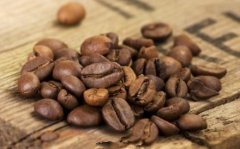Explanation on how to classify high-quality coffee and raw beans

First class: special grade
Blemish: 0-5
Obvious defects are not allowed.
Total weight of sample: 300g
Sample size difference: less than 5%, about 5%, or within the specified range
Connoisseur characteristics: must be outstanding in at least one of the following characteristics: taste, sour taste, aroma. The characteristics will be determined by both the buyer and the seller. After cup testing and appreciation, there are no defects.
Baking difference: 0 humidity: 9-13%
Second class: top grade
Blemish: 0-8
Allow to contain minimal defects
Total weight of sample: 300g
Sample size difference: less than 5%, about 5%, or within the specified range
Connoisseur characteristics: must be outstanding in at least one of the following characteristics: taste, sour taste, aroma. The characteristics will be determined by both the buyer and the seller. After cup testing and appreciation, there are no defects.
Baking differences:
Important Notice :
前街咖啡 FrontStreet Coffee has moved to new addredd:
FrontStreet Coffee Address: 315,Donghua East Road,GuangZhou
Tel:020 38364473
- Prev

Introduction to the origin of boutique coffee beans
Yega Xuefei is a small town, 700-21000 meters above sea level, synonymous with Ethiopian boutique coffee. It has been a wetland since ancient times. The ancient saying "Yirga" means to settle down and "Cheffe" means a wetland. The mode of production and flavor of coffee here are so outstanding that Ethiopian coffee farmers compete to be proud of the flavor of their coffee, making it the best in Africa.
- Next

The steps of how to select defective beans.
Before selecting defective beans, raw beans need to be screened in order to make the beans uniform in size. You can use three different sizes of special custom screen, or you can use the metal screen sold in general horticultural shops, but pay attention to the size. The purpose of sieving is to separate the size of beans and remove impurities.
Related
- Guji coffee producing area of Guji, Ethiopia: Humbela, Shakiso, Wulaga
- What is the most expensive variety of Qiloso in BOP multi-variety group?
- How to store the coffee beans bought home?
- Why are Yemeni coffee beans so rare now?
- Ethiopian Sidamo all Red Fruit Sun Sun Santa Vini Coffee beans
- SOE is mostly sour? What does it mean? Is it a single bean? what's the difference between it and Italian blending?
- Is Italian coffee beans suitable for making hand-brewed coffee?
- How to choose coffee beans when making cold coffee? What kind of coffee beans are suitable for making cold coffee?
- Just entered the pit to make coffee, what kind of coffee beans should be chosen?
- Can only Japan buy real Blue Mountain Coffee? What are authentic Jamaican Blue Mountain coffee beans?

